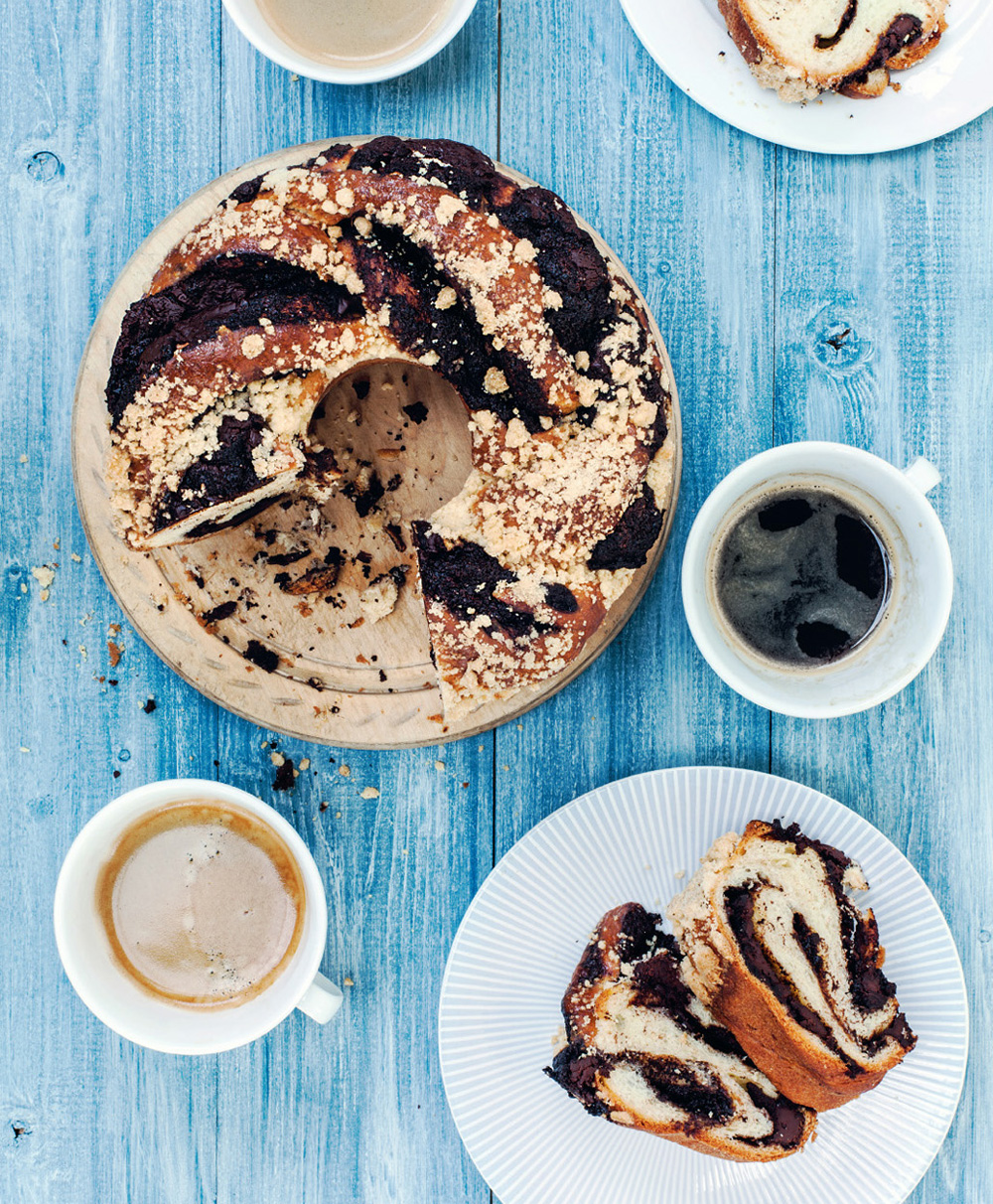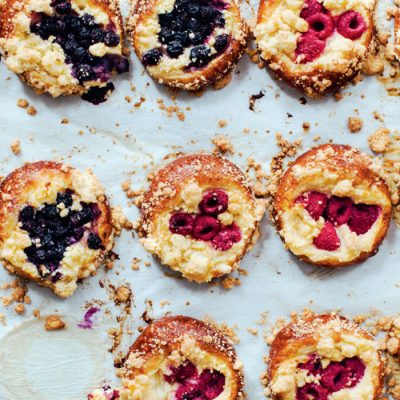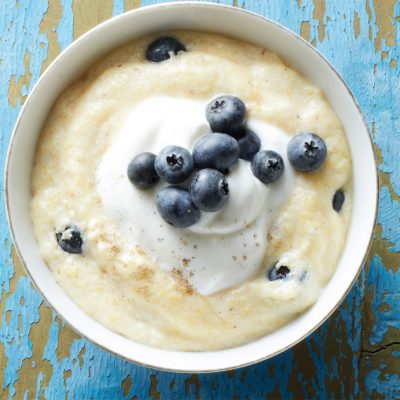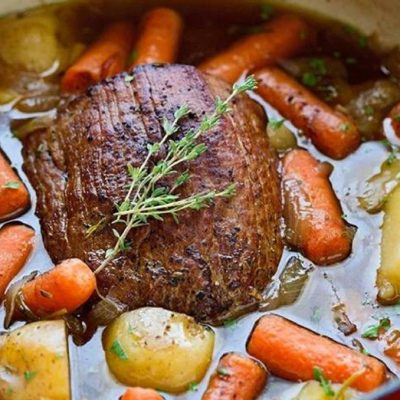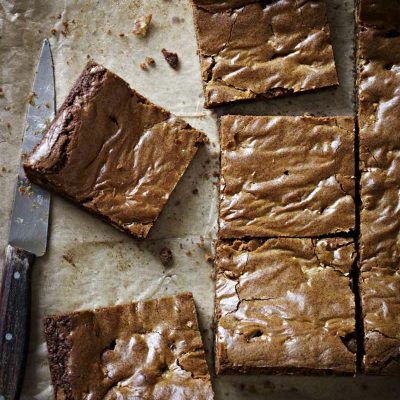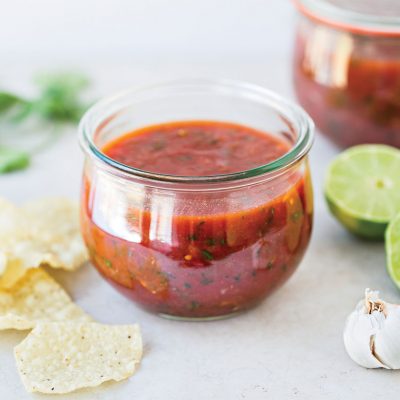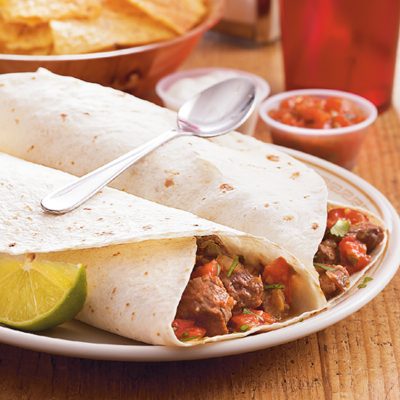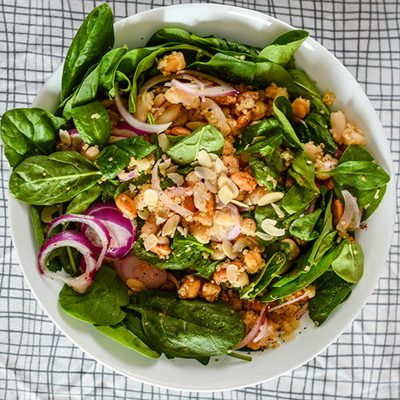Ingredients
-
½ quantity brioche Dough
-
60 g Butter
-
90 g dark Muscovado Sugar
-
1 tsp ground Cinnamon
-
25 g Cocoa Powder
-
a pinch of fine Sea Salt
-
150 g dark Chocolate
-
½ quantity of Crumble
-
Egg
Directions
A funny name, babka, and a cake that comes from central Europe, brought to America and Israel. It deserves to be better known here, because it’s a beautiful expression of simple home baking. Gail’s grandmother was famous for her delicious babka, which filled the house with an unforgettable smell as they baked – the promise of hot sugar and cinnamon caramelising in the oven, hidden in the folds of a delicious yeast dough. Sometimes there would be hazelnuts, sometimes almonds and raisins. Annoyingly for us, she never wrote down her recipe. The method was ‘some of this, and a little bit of that’. When you do something for over 60 years, weights and measures become superfluous. To this day we’re still chasing the mirage of that legendary babka, and while we haven’t quite got there yet, our version has already created a new generation of fans.
Traditionally, babka wouldn’t have used brioche dough, but since we’ve taught you how to make brioche already, let’s keep things simple. In fact, brioche is perfectly good for making babka – perhaps even a little too good!
Steps
|
1
Done
|
If you can find an angel food cake or any other ring tin around 20 cm in diameter, they’re perfect for creating the perfect circular crown shape that characterises a babka. But if you can’t – and they’re not always easily available – you can get clever with a regular round 20 cm springform tin. (Prepare the tin for baking by buttering it thoroughly.) Take a small ramekin – about 8 cm across and at least 5 cm tall – and butter all around its base and outside. Place it in the centre of the cake tin. |
|
2
Done
|
When the brioche has risen in the fridge for the second time, make the babka filling. Beat the butter with the dark muscovado sugar until creamy and smooth. You can either do this with a bowl, a wooden spoon, and a little effort, or you can use a stand mixer or hand mixer. Either way, once well combined, add the cinnamon, cocoa powder and salt and mix again briefly before setting aside. |
|
3
Done
|
Take the brioche dough and lay it on a lightly floured surface. Dust a rolling pin lightly with flour and roll the dough into a rectangle roughly 40 cm × 20 cm. Spread the filling evenly all over the dough, except for a 3 cm border at one of the longer ends, which should be left free of filling. |
|
4
Done
|
Scatter the chocolate across the filling and, starting from the end opposite your 3 cm filling-free border, roll the dough up like a Swiss roll, trying to avoid any air pockets from forming as you go. Gently press the dough together to seal up the roll. |
|
5
Done
|
If you or your kitchen are warm, the dough may have become too soft to handle easily by this stage. If so, chill the rolled dough for 30 minutes, covered with a clean, damp tea towel to prevent it from drying out. |
|
6
Done
|
When you’re ready to continue, take a sharp knife and score down the length of the Swiss roll to create two equal halves. Rotate the halves slightly so that the cut sides are facing towards the ceiling. Lay the halves over each other to form a cross, then form your babka: starting from the centre and working out, one side at a time, scroll the lengths of dough around each other to form a spiral, making sure that the cut, layered sides stay facing upwards at all times. Once you’ve formed the spiral, carefully lay it in the cake tin, wrapping it around the central funnel (or ramekin if you’re using a springform tin). Press the ends together to create a seamless crown of dough. |
|
7
Done
|
Cover the tin and its contents with a clean, damp tea towel and leave on the worktop to rise, well away from draughts, until it has doubled in volume – 1½–2 hours. |
|
8
Done
|
When nearly ready, preheat the oven to 200°C/gas mark 6. Gently brush the top of the babka with egg wash, then scatter over some crumble here and there, without covering the whole surface of the cake – you want some crunch, yes, but all those beautiful layers should still show through. |
|
9
Done
|
Place the babka in the oven and immediately reduce the temperature to 180°C/gas mark 4. After 25 minutes, turn the tin by 180° to ensure an even bake. It will be golden and ready after a total of 40–45 minutes. Let it cool for 15 minutes before even touching it. If you’re using a loose-bottomed tin, you can remove it at this point to cool for another 30 minutes. If you’re not, leave the babka until just warm before taking it out of its tin. This is so good warm, but shouldn’t be eaten straight from the oven – so resist! Put the kettle on and make a cup of coffee while you wait – babka and coffee is a classic pairing. This is best the day it’s baked, but you can keep it for 2–3 days in an airtight container. At this stage, once it’s a little dry, you might want to experiment with babka toast. |

